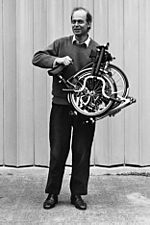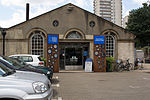Gunnersbury Park

Gunnersbury Park is a park in the London Borough of Hounslow between Acton, Brentford, Chiswick and Ealing, West London, England. Purchased for the nation from the Rothschild family, it was opened to the public by Neville Chamberlain, then Minister of Health, on 21 May 1926. The park is currently jointly managed by Hounslow and Ealing borough councils. A major restoration project funded by the Heritage Lottery Fund was completed in 2018. The park and garden is Grade II listed.Under Leopold de Rothschild in the later 19th century, the park and gardens were greatly developed into a leading example of the new type of woodland garden, relying heavily on new plants from Asia. Other features included a more formal "Italian Garden", Victorian scattered flower-beds, an orangery largely in glass, a rock garden, and an early example of a "Japanese garden" in England. All of these survive, though inevitably not as well-maintained as a century ago.
Excerpt from the Wikipedia article Gunnersbury Park (License: CC BY-SA 3.0, Authors, Images).Gunnersbury Park
Pope's Lane, London Acton (London Borough of Ealing)
Geographical coordinates (GPS) Address Nearby Places Show on map
Geographical coordinates (GPS)
| Latitude | Longitude |
|---|---|
| N 51.498 ° | E -0.292 ° |
Address
Pope's Lane
W5 4QP London, Acton (London Borough of Ealing)
England, United Kingdom
Open on Google Maps








